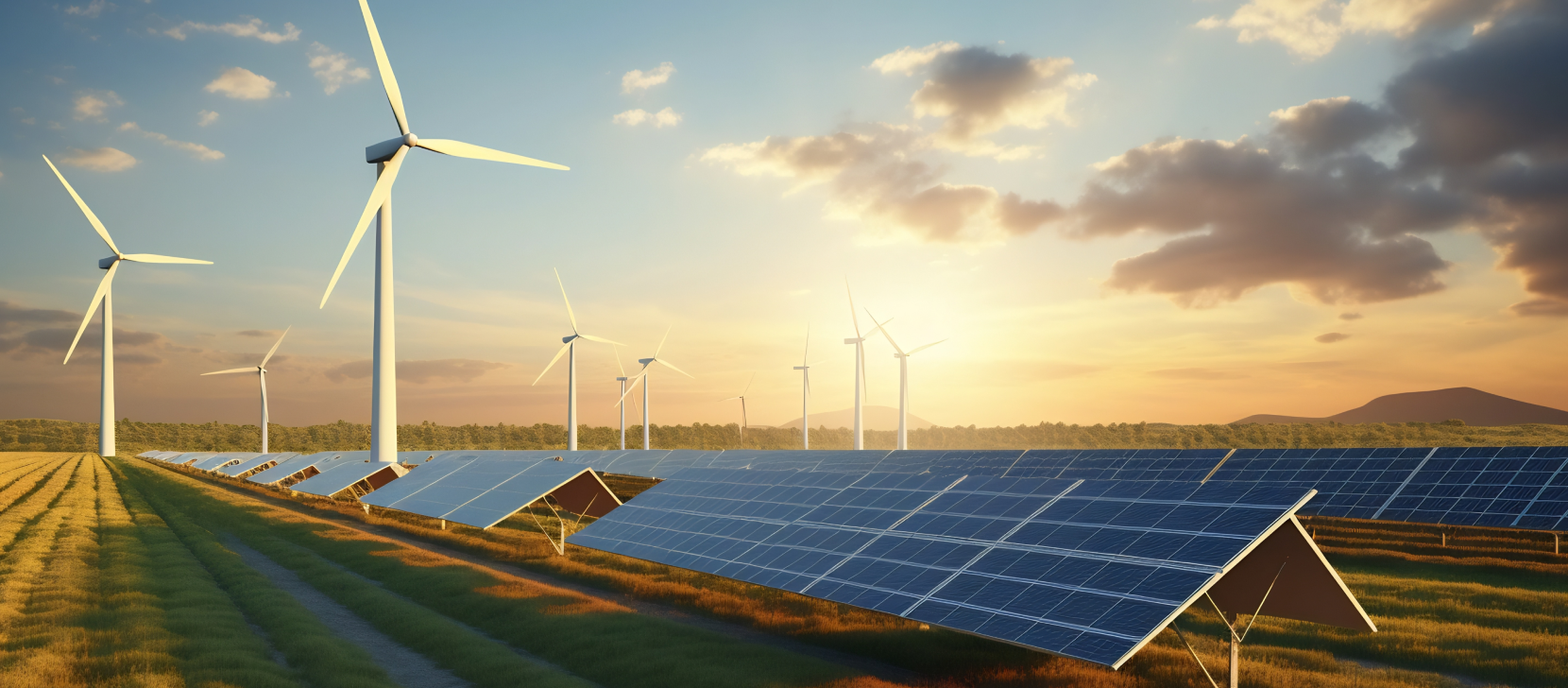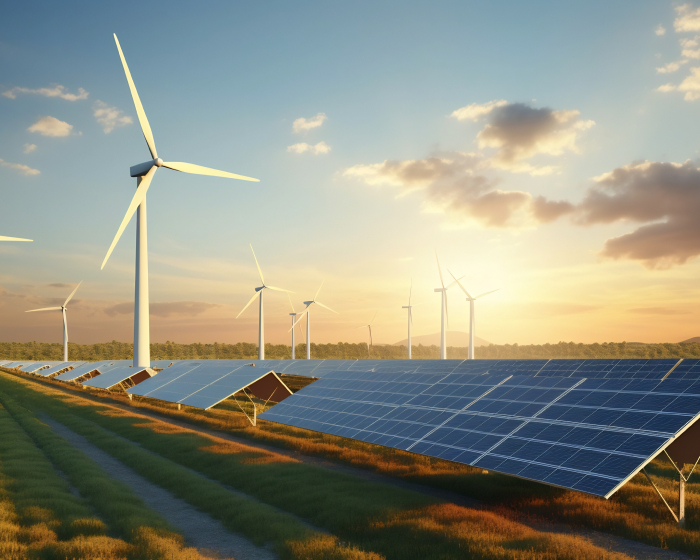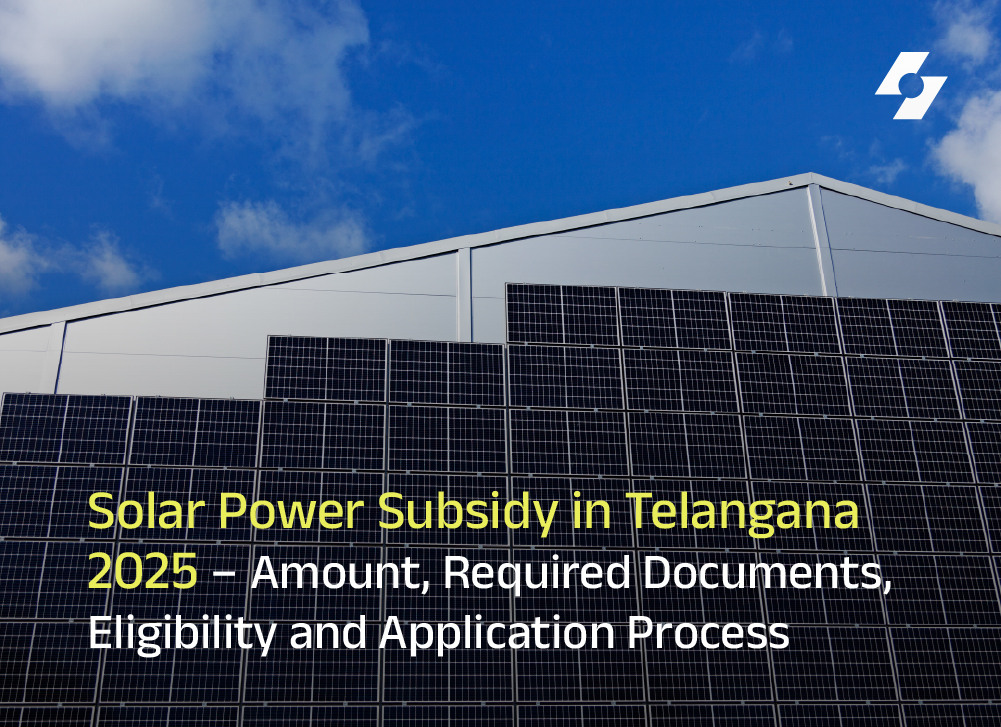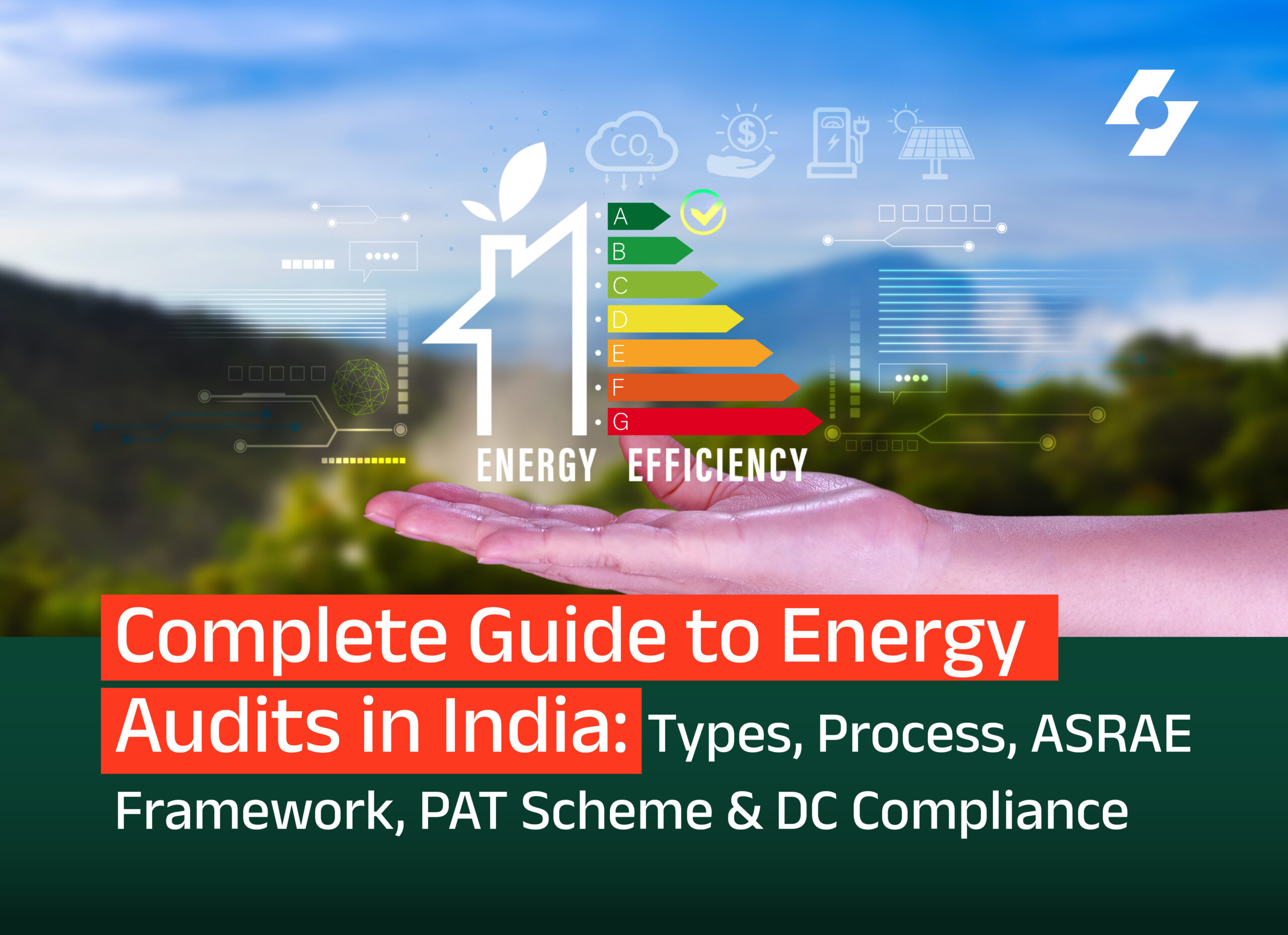The Andhra Pradesh Integrated Clean Energy (ICE) Policy 2024 is here to rev up the state’s renewable energy landscape, offering a powerful mix of innovation, sustainability, and financial incentives. With a clear focus on clean energy solutions and carbon emission reduction, this forward-thinking policy aims to create a thriving ecosystem for investors and businesses. By introducing tax breaks, government funding, and robust support for renewable energy storage projects, Andhra Pradesh is setting the stage for a greener, more energy-efficient future.
Andhra Pradesh (AP) is located in the southern coastal region of India, having a strategic location for harnessing the wind and the sun shines bright most days of the year. Therefore, various industries and businesses would undoubtedly look forward to producing green energy in the state. The Andhra Pradesh government made the ICE Policy announcement this year, in part, because of the state’s potential.
The chances for Andhra Pradesh to become the hub of green energy is evident in the potential its cities exhibit. Although with its share of some challenges, Andhra Pradesh has mostly favoured a renewable push. Under the leadership of Chief Minister Chandrababu Naidu, undivided Andhra Pradesh was among the frontrunners in clean energy development.
The table below displays the renewable energy capacities of the cities in Andhra Pradesh. It shows the massive potential that this state has for industries and businesses to make an AP renewable energy investment.
| Cities in Andhra Pradesh |
Total Installed RE Capacity (MW) |
Solar (MW) |
Biomass (MW) |
Wind (MW) |
Waste to Energy (MW) |
Small Hydro (MW) |
| Vizianagaram |
553 |
515 |
30 |
– |
6 |
2 |
| East Godavari |
207 |
105 |
69 |
– |
27 |
7 |
| West Godavari |
109 |
7 |
22 |
– |
– |
– |
| Guntur |
64 |
27 |
– |
– |
– |
36 |
| Kurnool |
1,132 |
563 |
12 |
531 |
– |
26 |
| Ananthapuramu |
5,182 |
1,840 |
– |
3,223 |
– |
– |
| Srikakulam |
53 |
31 |
22 |
– |
– |
– |
| Visakhapatnam |
30 |
4 |
26 |
– |
– |
– |
| Krishna |
66 |
4 |
54 |
– |
6 |
3 |
| Prakasam |
58 |
22 |
32 |
– |
– |
4 |
| Nellore |
106 |
41 |
37 |
3 |
– |
26 |
| YSR Kadapa |
1,061 |
746 |
6 |
309 |
– |
– |
| Chittor |
257 |
214 |
29 |
7 |
8 |
– |
Renewable Energy Capacities of the cities in Andhra Pradesh
AP offers significant potential for solar and wind power compared to other states. The following reasons justify why:
- Most days of the year are sunny (300 days).
- The wind speeds are consistent (44,229-megawatt wind power potential at 100-metre level).
- State government policies in AP favouring renewable energy development.
- Good potential for future capacity growth compared to other states that have limited potential for further expansion.
- The state has ample land for setting up solar and wind farms on a large scale. Officials have identified and surveyed 80,000 acres of land for wind, solar, and solar-wind hybrid projects.
- Andhra Pradesh is also improving its state’s infrastructure to accommodate and integrate large amounts of renewable energy. For instance, officials are introducing interstate transmission solutions, offering connectivity, and approving new capacity proposals.
The untapped potential of green energy in Andhra Pradesh is evident with the fact that each square metre of land receives more than 5 kilowatt-hours of solar energy per day. This means that the state has a lot of potential for leveraging solar, wind, hydropower, etc. but has not yet fully used it. As quoted by Andhra Pradesh Economic Development Board, AP currently has:
| Total Installed Capacity |
Renewable Installed Capacity |
Solar Power Potential |
| 25.7 GW |
8.9 GW |
38.4 GW |
| |
|
|
| Per Capita Electricity Consumption |
Wind Power Potential (100-metre height) |
Pumped Storage Hydro Power Potential |
| 1,284 kWh |
44.3 GW |
34 GW |
The capacity of leveraging renewable energy in Andhra Pradesh
With the amount of solar power that the state has the potential to generate, investors can look forward to the Andhra Pradesh Renewable Energy Policy. So, let’s dive into what the policy entails, its key objectives, and its long-term vision.
Andhra Pradesh’s Integrated Clean Energy Policy 2024
As of 17 October 2024, the state government issued the Andhra Pradesh Renewable Energy policy to initiate its transformation into a clean energy hub. In other words, the Andhra Pradesh Chief Minister N Chandrababu Naidu unveiled the Integrated Clean Energy (ICE) Policy to incentivise investments for businesses pursuing the renewable energy sector. These investments would fall across projects such as solar, wind, geothermal, hydropower, and other related renewable energy projects to achieve net zero emissions by 2047. The policy will be operational for five years.
In addition to the tax breaks included involve waiving of stamp duty for mini-hydro, pump storage projects, battery storage, biofuels and manufacturing units, there are also capital subsidies for businesses investing in battery storage, green hydrogen, biofuels and renewable energy manufacturing projects.
Key Objectives of the AP ICE Policy 2024
The ICE policy of renewable energy in Andhra Pradesh proposes an investment of Rs 10 Lakh Crores. This would further enable direct and indirect employment for 7,50,000 workers Additionally, the state wants to tap storage capabilities through pumped storage projects through six operational ports (4 are under development), a long coastline, and skilled manpower.
This project looks towards achieving green energy in Andhra Pradesh by targeting:
- 78.5 gigawatts of solar capacity
- 35 GW of wind energy
- 22 GW of pumped storage
- 1.5 million tonnes per year of green hydrogen manufacturing capacity
Also, the state aims to set up:
- 25 GWh of battery energy storage
- 5,000 EV charging stations for electric vehicles
- projects to manufacture ethanol and biogas from biomass
Incentives and Support Mechanisms for Renewable Energy Investors in Andhra Pradesh
The Andhra Pradesh Renewable Energy Policy puts a range of incentives on the table for investors.
- Developers can lease private or government land for a period of 30 years. Investors are allowed to extend the lease period to 33 years for pumped storage projects and mini hydro projects. The land allotment for these projects will go by the Andhra Pradesh Land Allotment policy. Moreover, land that will be used for green energy in Andhra Pradesh will be treated as non-agricultural land, exempting the land conversion fees.
- The lease rates for land are established accordingly:
- Rs 31,000 per acre per year for clean energy projects (5% escalation every 2 years)
- Rs 15,000 per acre per year for biofuel projects
- Rs 100,000 per acre per year for green hydrogen hubs at ports
- Further to this, the banking capacity is limited to 5% of the peak grid demand for the financial year 2024-25. An additional capacity of 5% will be introduced annually.
- Capital subsidies will be up to 25% of the fixed capital investment for wind, solar, and electrolyser manufacturing including 20% for battery manufacturing.
- There will be a 100% SGST reimbursement for all products for five years, excluding electrolysers.
- Furthermore, the NREDCAP or New & Renewable Energy Development Corporation of Andhra Pradesh will set up a single-window clearance portal to facilitate time-bound statutory clearances for clean energy projects under the ICE policy. This corporation will also assist in acquiring land at the actual cost of the manufacturing unit and assign captive resources for PLI projects. A PLI or Production Linked Incentive is a government scheme that offers incentives to companies to enhance sales of domestically manufactured products.
Therefore, as investors will enjoy the many perks offered through this policy, one can also take a look at the energy mix and capacity targets established.
ICE Policy’s Energy Mix and Capacity Targets
As per the AP ICE policy, the capacity installations are set for Andhra Pradesh DISCOM’s procurement, green hydrogen production and its derivatives, export of power to other states, and reaching commercial and industrial consumptions under the open access route.
The plan for the targets includes:
| Renewable Sources |
RE Export |
Green Hydrogen Power |
AP DISCOMs Procurement |
Open Access Route |
| Solar (GWp) |
10 |
28.8 |
36.7 |
2 |
| Wind (GW) |
10 |
8.6 |
15 |
1.8 |
| Bess (GWh) |
– |
5.6 |
16 |
3.6 |
| PSP for RTC (GW) |
5 |
13.9 |
3 |
– |
Andhra Pradesh is set for a bright sustainable future, but the right skills and manpower are required to achieve this massive milestone. Again, the state already has a large population (3,79,08,471 as of April 1, 2024) whose talents can be tapped accordingly. Steps are being taken to achieve this feat through skill development and the setting up of knowledge centers.
Skill Development and Knowledge Centers to Power the Future
The policy is targeting 25 to 30 GW of cleantech manufacturing to help create jobs for the local population. However, to ensure that the talents are obtained for such large-scale operations, it is necessary to build relevant skills. This is where the UGC or University of Green Energy and Circular Economy will be established to collaborate with the government of India. The collaboration will take place with industries under the PPP or Public-Private Partnership Mode.
CEKSDC or Clean Energy Knowledge & Skill Development Center will be set up to serve as a knowledge and training hub centre. This will also further enable partnerships with various academia, industries, and think tanks.
Long-Term Vision: Andhra Pradesh’s Roadmap to Net Zero by 2047
As renewable energy capacity takes a faithful leap in Andhra Pradesh, it proves to be a positive step in the direction of India’s 2030 renewable energy goals. Furthermore, the Andhra Pradesh Renewable Energy Policy will run for five years, and it aims to contribute to the promise of net zero carbon emission by 2047. Promoting green energy in the state will attract investment for the coming five years and create value for decades to come.
The Andhra Pradesh Integrated Clean Energy Policy 2024 marks a transformative step toward a sustainable energy future. The policy is in line with Andhra Pradesh’s ambitious target of net zero carbon emission by 2047 and with strengthened initiatives under this policy, Andhra Pradesh is set to attract significant investment over the next five years, exponentially expanding its renewable energy capacity and securing its position as a key leader in the energy transition.
Subscribe to our newsletter




